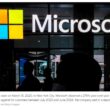Keeping secrets
The need to communicate privately has existed since ancient times. Julius Caesar, for instance, employed a secret code to communicate with his generals where each letter of his original message was replaced by the letter three positions to the right in the alphabet. Thus the “key” was the number 3, and the cipher algorithm to decrypt the message was “shift to the left.” To be useful at all, the key must have been a secret known only to Caesar and his army, but it is hard to imagine that the code existed for long before being broken.
In more recent times, cryptography played a pivotal role in World War II thanks to Allied code breakers. In the European theater, first Poland and later the United States and Great Britain broke the main German cryptosystem, Enigma. Many historians believe the Allies' ability to read Enigma-enciphered messages and act on that information shortened the war by two years.
Perhaps the single greatest code-breaking success was Midway. In 1942, the Japanese planned to surprise the American military on Midway Island, but their plan was thwarted in large part because U.S. Navy cryptanalysts in Hawaii had partially broken the Japanese Navy Fleet Code. Despite breaking fewer than 15% of Japanese messages, Cmdr. Joe Rochefort, the officer in charge of the cryptanalysts, believed the Japanese were planning to attack a target codenamed “AF.” Rochefort also believed AF referred to Midway, but Adm. Chester Nimitz needed more evidence. With Nimitz's approval, the Marines on Midway were told to send a plaintext message complaining about a lack of fresh water. Two days later, on May 12, 1942, a Japanese message was decoded stating: “AF is short of water.”
Knowing Midway would be attacked, the U.S. Navy and Marines were able to adjust their forces and eventually claim victory. Midway was the turning point in the war in the Pacific, in no small part thanks to the Navy cryptanalysts.
Today, cryptography is used in nearly all forms of modern communications to provide authentication and privacy. However, radio lags most other forms of electronic communication in the adoption of cryptosystems. Despite the use of digital transmission in nearly all cell phone traffic and a good portion of public-safety radio traffic — the Project 25 digital radio standard, for instance, supports several encryption methods, including the Digital Encryption Standard (DES) and the Advanced Encryption Standard (AES), plus several lesser known ciphers — only a tiny fraction of calls are encrypted.
Encryption is perhaps the most important element of cryptography. It is the process of converting ordinary information, called plaintext, into unintelligible gibberish, called ciphertext. A cipher is a pair of algorithms, one to perform encryption and another to perform the reverse operation, decryption. The operation of the cipher is controlled by the algorithms and by a key that is a secret parameter ideally known to only the sender and the receiver.
The goal of any cryptosystem is to provide an easy and inexpensive means of encryption and decryption to all authorized users who possess the key. Simultaneously, the cryptosystem must make it difficult and expensive to discover the plaintext message from the ciphertext without access to the key.
Modern cryptography falls into two fields of study:
- Symmetric-key, also called private-key cryptography, and
- Asymmetric-key, also called public-key cryptography.
Private-key systems require that both the sender and the receiver share the same key. The main drawback of private-key systems is key management. To minimize damage caused by loss of a key or a successful cryptanalytic attack, it is necessary to change the key frequently. Distributing the key via secure means may require a courier or some equally expensive means. Military organizations often change the key daily, but public-safety agencies and commercial companies rarely do so for cost reasons. Private-key encryption was the only type publicly known until 1976, when Whitfield Kiffie and Martin Hellman published the first paper on public-key cryptography.
Public-key systems employ two keys, a public key and a private key. The idea behind public-key cryptography is that the calculation of one key (the private key) is computationally impractical from the other key (the public key), even though the two are necessarily related. The two keys are generated secretly, as a pair. The public key can be freely distributed while its paired private key remains secret. Typically, the public key is used for encryption and the private key is used for decryption. In addition to encryption, public-key systems can be used to create digital signatures, which are a common form of authentication.
The main advantage of public-key cryptography is that users can safely communicate without having met or communicated previously. It is commonly used on the Internet for Web browsing and e-commerce using a protocol called Transport Layer Security (TLS).
Another use of cryptography in radio can be found in the IEEE 802.11 series of standards for wireless local area networks (LANs). Wireless LANs are inherently vulnerable to intrusion and attack because the wireless link allows the attacker to operate in the open with little fear of discovery. Unlike the wired network, there is no traceable path to a fixed location. Because wireless LANs are simply an extension of the wired Ethernet, they can create vulnerability in the wireline network that did not exist previously.
The original 802.11 standard employed three basic security mechanisms: Service Set Identifier (SSID), MAC address lists, and Wired Equivalent Privacy (WEP).
Privacy was achieved in 802.11 with the WEP protocol. WEP is an encryption algorithm. Many early press reports documented the security vulnerabilities of wireless LANs, particularly WEP, which originally used a 40-bit key. Today, 64-bit and 128-bit keys are used, but hacker software is available on the Web that, with sufficient time, will crack these encryption schemes.
Flaws in WEP and the initialization vector make the algorithm vulnerable no matter what length key is used. In particular, the static nature of the keys and the manual process of key management make the network vulnerable to attack. For example, the longer a key is in use, the more opportunities exist for a hacker to obtain a copy of a plaintext message and its equivalent ciphertext. Armed with these two pieces of information, the hacker's job is orders of magnitude easier, and the chances of successful attack are quite high.
The IEEE 802.11 committee developed a new security standard to correct these security shortfalls. The committee's efforts were published as IEEE 802.11i in the summer of 2004. The 802.11i standard implements a set of protocols called Wi-Fi protected access (WPA) through two main techniques:
- Temporary Key Integrity Protocol (TKIP), an algorithm that varies the crypto key.
- The Advanced Encryption Standard (AES), used widely by the banking industry.
It is believed that these two techniques, if implemented properly, will ensure security of 802.11 networks.
Jay Jacobsmeyer is president of Pericle Communications Co., a consulting engineering firm located in Colorado Springs, Colo. He holds BS and MS degrees in electrical engineering from Virginia Tech and Cornell University, respectively, and has more than 25 years experience as a radio frequency engineer.

















